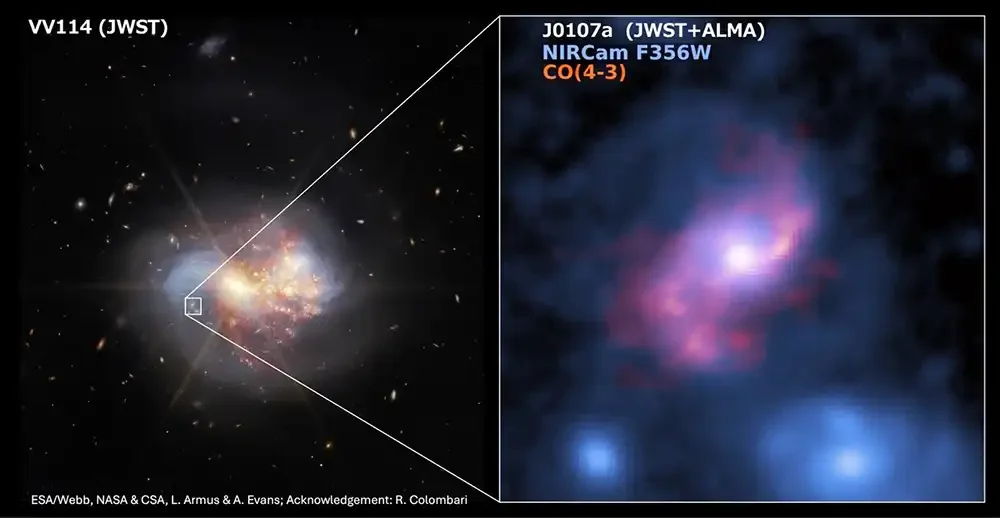
Astronomers Discover Ancient Milky Way Twin, Rewriting Galaxy Formation Theories
A groundbreaking discovery is shaking up our understanding of the early universe. Astronomers have identified a galaxy, dubbed J0107a, that existed 11.1 billion years ago and bears a striking resemblance to our own Milky Way. This ancient galaxy, however, is far more massive, prompting scientists to reconsider existing theories on galactic formation.
The distant galaxy was observed using data from the Atacama Large Millimeter/submillimeter Array (ALMA) in Chile and NASA's James Webb Space Telescope. Analysis reveals that J0107a's mass, encompassing stars and gas, exceeds that of the Milky Way by over ten times and boasts a star formation rate approximately 300 times greater. Interestingly, despite its immense size, J0107a is more compact than our home galaxy.
"The galaxy is a monster galaxy with a high star formation rate and plenty of gas, much more than present-day galaxies," explains astronomer Shuo Huang of the National Astronomical Observatory of Japan, the lead author of the study published in Nature. Co-author Toshiki Saito, an astronomer at Shizuoka University in Japan, adds, "This discovery raises the important question: How did such a massive galaxy form in such an early universe?"

While a few galaxies with similarly high star formation rates exist today, they are typically involved in galactic mergers or collisions. J0107a, however, shows no signs of such interactions. Like the Milky Way, J0107a has a barred spiral structure, a feature more common in later stages of galactic evolution. This surprising characteristic throws a wrench into established theories and suggests that ordered galactic structures could arise much earlier than previously thought.
Further bolstering this notion, the PANORAMIC Survey team has also identified another remarkably old yet mature spiral galaxy named Zhūlóng (Torch Dragon), dating back to just one billion years after the Big Bang. Zhūlóng's existence further emphasizes that the universe developed at a quicker pace than scientists once assumed. Its blend of old and young stars indicates stable, mature galaxies might have emerged far earlier than predicted.
According to the BBC Sky at Night Magazine, Zhūlóng's early maturity challenges the current belief that it could take literally billions of years for something complex like a mature spiral galaxy to form.
Huang notes the significance, “Compared to other monster galaxies in the distant universe (dating to an earlier cosmic epoch) whose shapes are usually disturbed or irregular, it is unexpected that J0107a looks very similar to present-day spiral galaxies.”
This landmark discovery, made possible by the advanced capabilities of the Webb Telescope, underscores that galaxies with spiral shapes appeared much earlier in the universe than previously imagined. Approximately two-thirds of spiral galaxies visible today contain 'bar' structures that are theorized to pull gas from the spiral arms to the center of the galaxy.
These observations challenge existing models of galactic formation and necessitate a revision of current theoretical frameworks. As Saito notes, the dynamics of these early massive galaxies are still poorly understood.
J0107a is now one of the oldest known examples of a barred spiral galaxy. Its bar structure measures approximately 50,000 light-years in length, offering a glimpse into the inner workings of these ancient cosmic giants. By studying these ancient galaxies, we can gain deeper insights into the processes that shaped the universe we see today.
This remarkable find begs the question: What other surprises from the early universe are waiting to be uncovered? Share your thoughts and theories in the comments below!